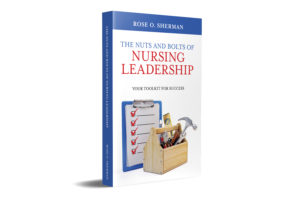By Rose O. Sherman, EdD, RN, FAAN
“If you want something new, you have to stop doing something old,” Peter Drucker.
There may never be enough experienced nurses to meet the needs of a patient population that is becoming increasingly complex. Nurse staffing is at a critical juncture in many medical centers – the leaders know it, and the staff certainly know it. The only way to move forward is to do less with less. A good starting point is to study what nurses are currently doing in our health systems and seriously ask whether all these tasks/activities require the expertise of an RN.
Peter Drucker, considered the father of modern management theory, frequently talked about the problem that leaders have in making decisions to stop doing things. To move forward with a change in care delivery models, nurse leaders need to move beyond this mindset and consider ways to do less with less.
Important Questions to Ask Today
1. If we were part of a brand new system that had the opportunity to design entirely different care delivery, what would we do differently?
2. What are the redundancies that we have in our current processes that we could eliminate to save staff time?
3. Are the emerging technologies that we are using consuming or saving time? Are there some available that we could purchase that would leverage staff time?
4. Do all of the services that are provided by professionals require this level of expertise?
5. What parts of our care could we eliminate or reduce and lose very little value to the patient?
6. Are we leveraging our electronic health records to their fullest potential, or are we slaves to documentation?
7. Do our staffing models still make sense, or are they designed for the convenience of our workforce? Would team nursing be a better approach?
8. Are some of our processes too complicated? How could they be streamline
9. Could this care be delivered in a less staff intensive/expensive setting
10. Do we use the data that we have to make better decisions?
The challenge in doing less with less is a willingness to ask frankly what adds value to the patient experience and what does not. This may mean sacrificing some sacred cows. The current health care environment is challenging the sense of order for many nurses with long professional careers. When we feel fearful, it can be comforting to cling to what we know has worked in the past. A key skill for leaders is to work in the present with an eye toward the future.
Simpler processes and practices are often the most elegant and reduce everyone’s time. The best solutions may lie with our staff, particularly our younger staff, who are less tied to traditional ways of practice. They may have great ideas about tasks that PCAs or LPNs could assume.
I would challenge you rather than to ask staff, “how can we do more with less” – ask “what can we do less of and not significantly impact care?” You may be surprised at some of the great ideas that may be generated.
© emergingrnleader.com 2021
Launch 2021 by giving your leadership team the gift of a highly rated webinar – Nursing Leadership in 2021: Rebooting after a Life-Quake A Nursing Leadership Reboot Workshop
Read the Nurse Leader Coach – Available at Amazon and Other Book Sellers.
Now Available to Strengthen Your Leadership in 2021 – The Nuts and Bolts of Nursing Leadership: Your Toolkit for Success




 LinkedIn
LinkedIn Instagram
Instagram